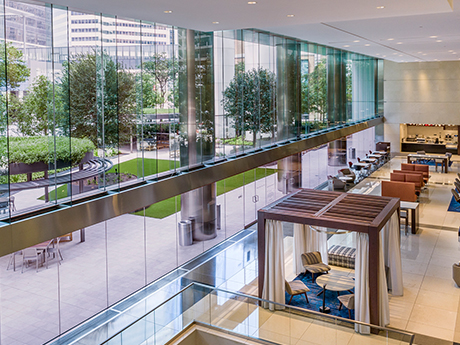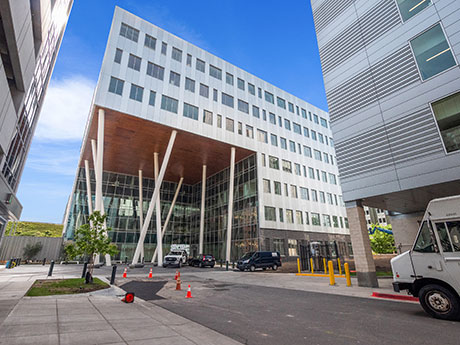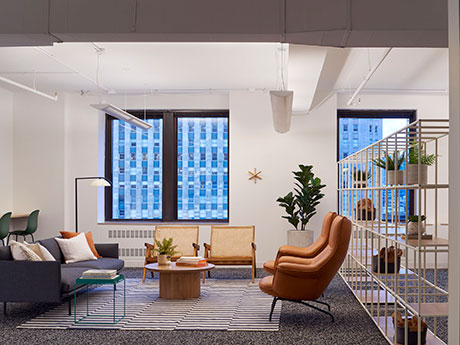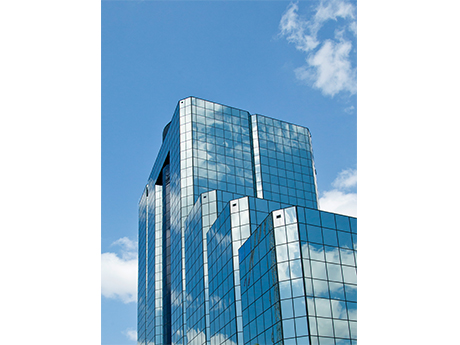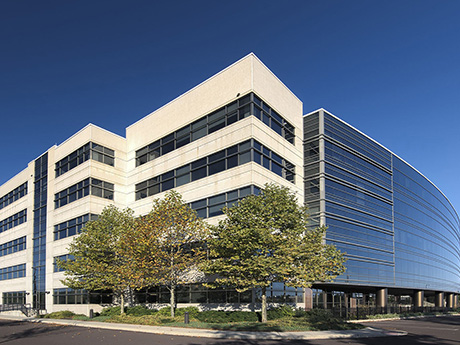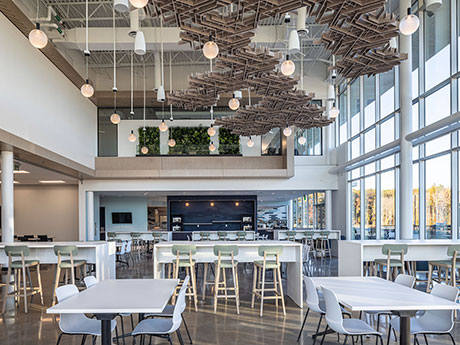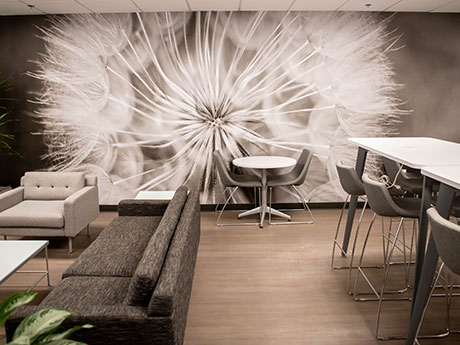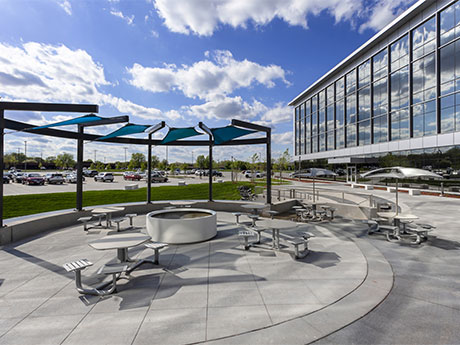By Chip Colvill, executive vice president, Cushman & Wakefield Like many U.S. cities in the post-pandemic world, Houston’s office sector faces a long road to recovery. Historically, office demand follows office job creation — and job growth has been a bright spot of the Houston economy in 2022. Unfortunately, the U.S. economy seems to be slowing, and the outlook remains highly uncertain. Odds of a recession have risen; inflation and wage pressures remain elevated, and higher interest rates are impacting various parts of the economy, including commercial real estate. Throughout the United States as well as in Houston, the correlation between job growth and office demand is tenuous, given that many businesses are still recalibrating workplace strategies to allow remote and hybrid work schedules. However, new jobs — even more flexible, hybrid jobs — will necessitate various types of workspaces, including demand for office and flexible office space. Newer office buildings across Houston have thrived despite the market’s elevated Class A vacancy rate of approximately 26 percent. Each new quarter of data continues to confirm the flight-to-quality trend and the existence of a bifurcated office sector between older and newer office product. Higher-quality and newer office space is dominating as …
Office
By Jeff Karger, JLL There’s no doubt that the office market today is much different than what it was five years ago. Employers across the nation have had to adjust their work models, time and time again, to meet the needs of their employees — and those in Grand Rapids are no exception. As landlords, employers and employees adapt to these changes, it’s important to understand the direction of the office market. Below, check out five factors that are defining it. 1. A flight to quality Like many other cities across the nation, Grand Rapids is experiencing a resounding flight to quality. Employers are seeking Class A and trophy spaces to appeal to their employees and offer them an experience, rather than just a cubicle to work in. Some of these office features can include free fitness centers, onsite cafés, coffee shops and restaurants, outdoor terraces and more. Plus, according to JLL research, 59 percent of employees expect to work at a company that supports their health and well-being. Interestingly enough, employees prioritize this over salary — a key reason why companies and landlords alike are investing in amenitized spaces with up-to-date HVAC systems, exercise classes and healthy food options. …
By Traci Kapsalis, JLL It’s no secret that the COVID-19 pandemic turned every office market across the globe upside down. In the process, quality of life, health and well-being have become top priorities for office workers, as well as a push for hybrid and flexible working models. To understand and support these evolving expectations, local governments, employers and landlords are working together to identify and shape their new future of work. In fact, new research from JLL reports that the next three years will be a critical phase for commercial real estate strategy, representing a crucial window of opportunity that will determine how successful companies (and cities) will be in adapting to rapid changes. At the crossroads of America, the Indianapolis market is well on its way to a reimagined office environment. Here are three demonstrable signs. 1. Flight to quality dominates the office market Leasing activity for Class A office properties is strong in Indianapolis. According to a recent report, activity in this sector is reaching new heights as it achieved 248,000 square feet of occupancy growth in the second quarter — the highest in a single quarter in over four years — and hit record-high rents of almost …
By Ryan Foran, Cresa As we approach the three-year anniversary of the start of the pandemic, it continues to affect the commercial real estate industry in many ways, with no asset class impacted as significantly as the office sector. While retail initially stumbled but rebounded, and industrial soared to unexpected heights amid distribution emergencies, millions of U.S. office employees continue a tenuous balance of working from home versus going into the office. The pandemic wasn’t all bad news for office tenants. Many businesses with simple infrastructure and experienced staff have been so effective with remote set-ups that they have shed office space permanently and eliminated rent from the books. Others have embraced emerging technologies like virtual meetings and chat solutions to reduce the need for face-to-face interaction. In one way or another, most businesses were able to leverage this unique situation to improve their business processes, technology and personnel, and have embraced remote work at some level. But many businesses with younger, less experienced staff have reported ongoing struggles with recruiting, mentorship, culture development and staff retention. Some of these may have been amplified by complex external factors such as an ongoing labor shortage, an unprecedented resignation of our older …
By Brett Merz, senior vice president, KBS Texas continues to be a top state for job and population growth as its low cost of living and business-friendly policies attract companies and residents from other parts of the country. As such, many commercial real estate owners and operators are recognizing the state’s potential for increased leasing activity in the second half of 2022 and throughout 2023. The portfolio of KBS, which has long been investing in these markets, currently contains 16 office assets in these cities, and we continue to evaluate opportunities to acquire more that align with our investment strategy. Based on 30 years of experience in acquiring and operating premier office assets throughout Texas and beyond, here are a few trends we anticipate continuing for the remainder of 2022 and into next year. Rising In-Migration Major Texas markets including Austin, Dallas-Fort Worth (DFW), Houston and San Antonio are likely to remain magnets for in-migration. Residents are moving to these markets in search of a more affordable quality of life, which is aided by the absence of a state income tax. In addition, companies are seeking office space in a region with business-friendly tax policies. Austin, in particular, continues to …
By Marc DeLuca, CEO and eastern regional president, KBS Refreshing office properties with updated amenities is a time-tested strategy for infusing buildings with new life and appealing to future and existing tenants. While an asset’s location is a fixed element and a region’s fundamentals tend to change slowly, amenities are more flexible and can usually be implemented quickly if necessary for immediate impact. A recent report by flexible workspace provider TCC Canada found that many companies and their team members increasingly recognize the benefits of gathering teams in a central workplace. But after more than two years of varying degrees of remote work, it makes sense for property owners to invest in amenities that actually meet the needs and wants of office users — which have recently shifted. So which amenities are the best ones to include in today’s office buildings? As an owner and operator of premier office assets for the last 30 years, KBS has witnessed amenity preferences come and go. We know how to spot a passing fad versus a trend with legs. Based on our expertise in this area, here are a few amenities we see attracting office tenants in the current and emerging environment. Scalable …
By Rob Roe and Jessica Urbin, JLL What does the future of the office in Cleveland look like? While there isn’t one straightforward answer, there’s no doubt that the office of today looks much different than it did five years ago. Though some companies still maintain a traditional office space, the onset of hybrid work has indisputably changed the way many companies use — and choose — their real estate. This adoption of hybrid work has driven the market’s evident transformation. Smaller office spaces As companies adopt hybrid work models, the need for larger office spaces decreases. This doesn’t mean companies are eliminating their office real estate, though. In fact, 60 percent of office workers want to work in a hybrid style today, and 55 percent are doing so already. These downsized spaces support this work model by creating shared spaces, such as cubicles or lockers, as well as incorporating more conference rooms and small team rooms to hold private video calls. They also encourage something employees can’t get at home: in-person collaboration. New spaces are being outfitted with intentional spaces to meet, such as lounge areas, desks in open areas, cafés and more. In addition, having small spaces doesn’t …
By Ryan Nierman, Ph.D. and Bradley Meloche, Colliers The tumultuous events of the last two years have brought uncertainty into many aspects of Detroit’s office market. Even as companies emphasize their eagerness to return to the office, many questions remain regarding space designs, required square footage and buildout requirements. Tenant selectivity With increasing vacancy rates and negative net absorption throughout the metro Detroit office market, real estate experts are witnessing tenants becoming more selective in property occupancy. The result has been a slowing demand for Class B and C office product. Tenants have begun targeting Class A assets with improved visibility, signage, modernized color schemes, numerous amenities and flexible floorplan designs. As the need for larger office footprints goes down in reaction to post-COVID considerations, tenants have become willing to pay increased per-square-foot rents, for at or below preexisting rental budgets, due to decreased size requirements. The need for tenants to target Class A facilities has been compounded by the so-called “Great Resignation,” as employees are willing to demand more from their employers. As a result, employers know that a failure to invest in a more modern and amenitized workspace may result in poor employee retention and future talent recruitment. …
By Richard Meder, Colliers While office markets across the country have experienced a slow climb back to normalcy following COVID-19-related restrictions, the Dayton office market has found its strength in the Wright-Patterson Air Force Base (WPAFB). Though the Dayton office market around WPAFB experienced similar ebbs and flows as that of the rest of the country during the pandemic, business never stopped. For some in other markets, the lasting effects of this disruption to the office market remain unknown. Business leaders must decide whether to implement a remote work lifestyle into their employee regimen or make a push to get back to normal office life — for some companies it is considered a hybrid approach. For the tenants in the WPAFB submarket, however, there was never question. While many office tenants vacated their spaces out of uncertainty, defense contractors cautiously occupying office spaces at the WPAFB submarket almost singlehandedly helped Dayton remain upright during the pandemic. With the submarket almost entirely consisting of defense contractors, this type of defense contracting work was not allowed to stop with the rest of the world. Having to adhere to both local and federal guidelines, decision-making among defense contractors certainly slowed, but it never …
By Chris Curran and Alexa Strickler, R&R Realty Group It’s no secret that the past couple of years have been dramatically different for us all. We’ve had to adjust to new routines, new practices and new ways of getting work done. Some of these new things will be here to stay while others have already receded into memory. No matter the amount of change though, one thing remains the same. That’s the need for human connections and relationships. And, ultimately, that’s what physical office space provides. It seems many organizations are starting to understand just how valuable this connection truly is. Across various submarkets within the Des Moines metro area, companies large and small are returning to in-person work. And it’s not just existing customers returning to their spaces. There has been a marked uptick in office leasing activity in locations ranging from downtown to the western suburbs. From advertising agencies to accounting firms and more, the vacancy rate across the entirety of central Iowa is beginning to be chipped away. Why are so many companies across a wide variety of industries heading back to the office? Well, like we mentioned earlier, there’s a sense of connection and an ability …


